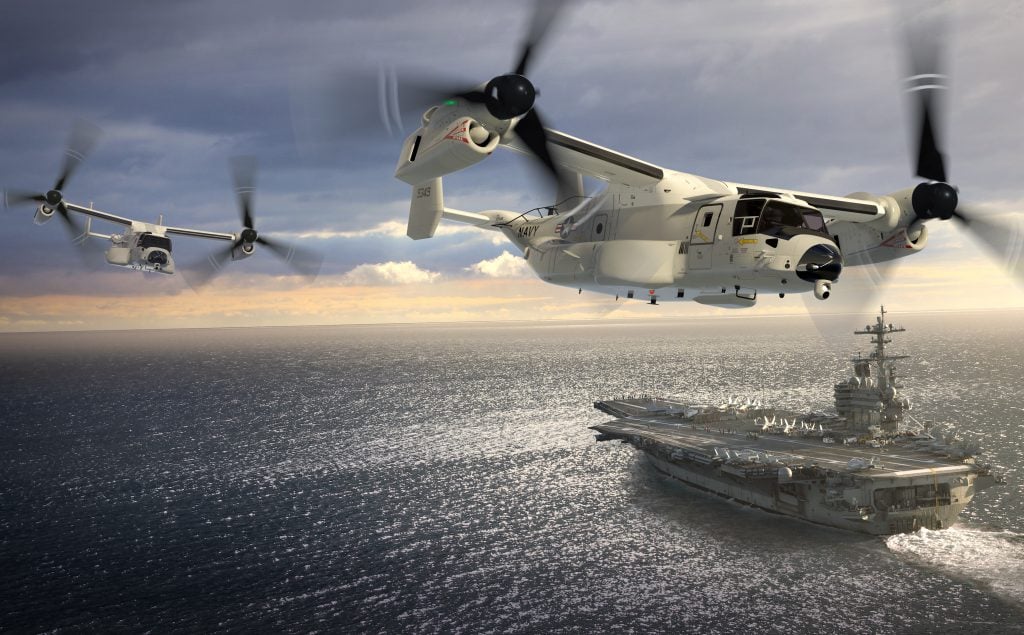
Artist’s concept of CVM-22s in flight. Bell-Boeing Image
Due to incorrect information in a press release, this post has been updated to reflect the correct number of Marine Corps V-22B Osprey aircraft that was awarded in a June 29 contract modification to Bell-Boeing. The Marine Corps will be getting 14 MV-22B aircraft instead of 34 and a total of 58 Ospreys are included in the contract modification.
The U.S. Navy bought its first CMV-22 Ospreys for use as carrier onboard delivery aircraft as part of a $4.2 billion contract modification announced by the Pentagon last week.
Under the terms of the modification, Bell-Boeing will build and deliver the first 39 CMV-22B Osprey tiltrotor aircraft for the Navy; 14 MV-22B aircraft for the Marine Corps; one CV-22B for the Air Force; and four MV-22B aircraft for the government of Japan, according to the announcement.
For the Navy, these are the first Osprey’s purchased specifically to replace its fleet of 27C-2A Greyhound turbo-prop aircraft. Since the 1960s, the C-2s have served as the Navy’s COD vehicle. The Navy first announced plans to consider the Osprey as a Greyhound replacement in 2015.
The current modification follows a 2016 $151 million contract awarded to Bell-Boeing to complete the engineering work needed to adapt the V-22 to operate as the COD. Those modifications included an extended-range fuel tank and a high-frequency beyond-line-of-sight radio.
The Navy anticipates the Osprey COD program achieving initial operating capability in 2021, and fielding them to the fleet by the mid-2020s. In less than a decade, supplies, mail, aircraft engines and visitors will no longer experience the explosive sensation of being on a roller coaster in reverse as the Greyhound’s tailhook catches an arresting wire. Instead, the relatively delicate landing of an Osprey tiltrotor aircraft touching down on a pitching flight deck will become the norm. Introduction of the Osprey will also change how the carrier strike group uses the COD.
“With the incorporation of the V-22, I think the fleet will also see additional capabilities from the entire group at-large, because we now have the option of taking cargo and personnel to some of the smaller decks without first having to come to the aircraft carrier,” Marine Corps Lt. Col. Brett Hart, then-Marine Operational Test and Evaluation Squadron (VMX) 1 executive officer, said in 2016 Navy. “With that considered, the carrier can expect to have potentially more flight deck and airspace freed up, allowing it to launch more sorties in support of combat operations.”
